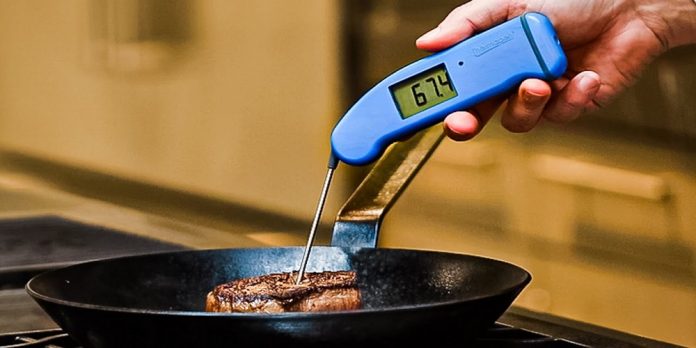Everyone needs a meat thermometer. You do not have to be a professional chef to require one. As long as you cook meat, you should have one. A meat thermometer is one of the many, yet important culinary devices that make cooking a lot easier and safer.
It measures the temperature of meat during the process of cooking. This includes pan-frying, roasting, or poaching. Meat thermometers can be used to check the temperature of different kinds of meat such as beef, poultry (chicken or turkey), pork, mutton, etc.
When cooking meat, how well cooked it is very critical. With the appropriate temperature, your meat is not overcooked or undercooked. A meat thermometer ensures that meat is cooked at the right temperature. Meat thermometers can also be used as an indicator to check the inside of your kitchen appliances such as freezer, refrigerator, or oven.
There are different types of meat thermometers and they all have their pros and cons. This article will outline them perfectly.
Types of Meat Thermometers
Although there are different types of meat thermometers, they all have the common features of checking the temperature of the meat. Each type of meat thermometer has what makes it unique. Some of the types of meat thermometers include,
1. Analog meat thermometer
A lot of chefs from time past were trained with analog meat thermometers and a number of them still prefer it. When calibrated, analog thermometers can stay through the cooking process till the meat is cooked. They are often used when cooking large portions of meat. Analog thermometers have a very long probe that is stuck into the meat and can be left there till the meat is ready.
Pros
- They are less expensive than other forms of thermometers
- They do not require batteries as they are often calibrated before use.
- Due to their long probe, it can be left through the cooking process to monitor any temperature change.
- They are considered a classic.
2. Digital meat thermometer
Digital meat thermometers do not need to be calibrated before use like analog thermometers. They are usually preset and can read temperature easily. Digital meat thermometers can be used on different-sized chunks of meat.
Pros
- They are very portable
Most digital meat thermometers are very small in size and can easily be put in pockets, they are also easy to carry around.
- They are user-friendly and easy to understand.
Digital meat thermometers are easy to read and understand. They are not as complex as analog meat thermometers. They are faster and better at measuring temperature, especially with their large screens.
- They have bells and whistles
The digital thermometer has an alarm that goes off when the meat is cooked to the required temperature. That way, you are more relaxed while cooking.
Conclusion
Meat thermometers are handy devices that have saved a lot of chefs the stress of guessing if the meat is ready or not. Whether you use the analog or digital thermometer, in the long run, the results are the same.











